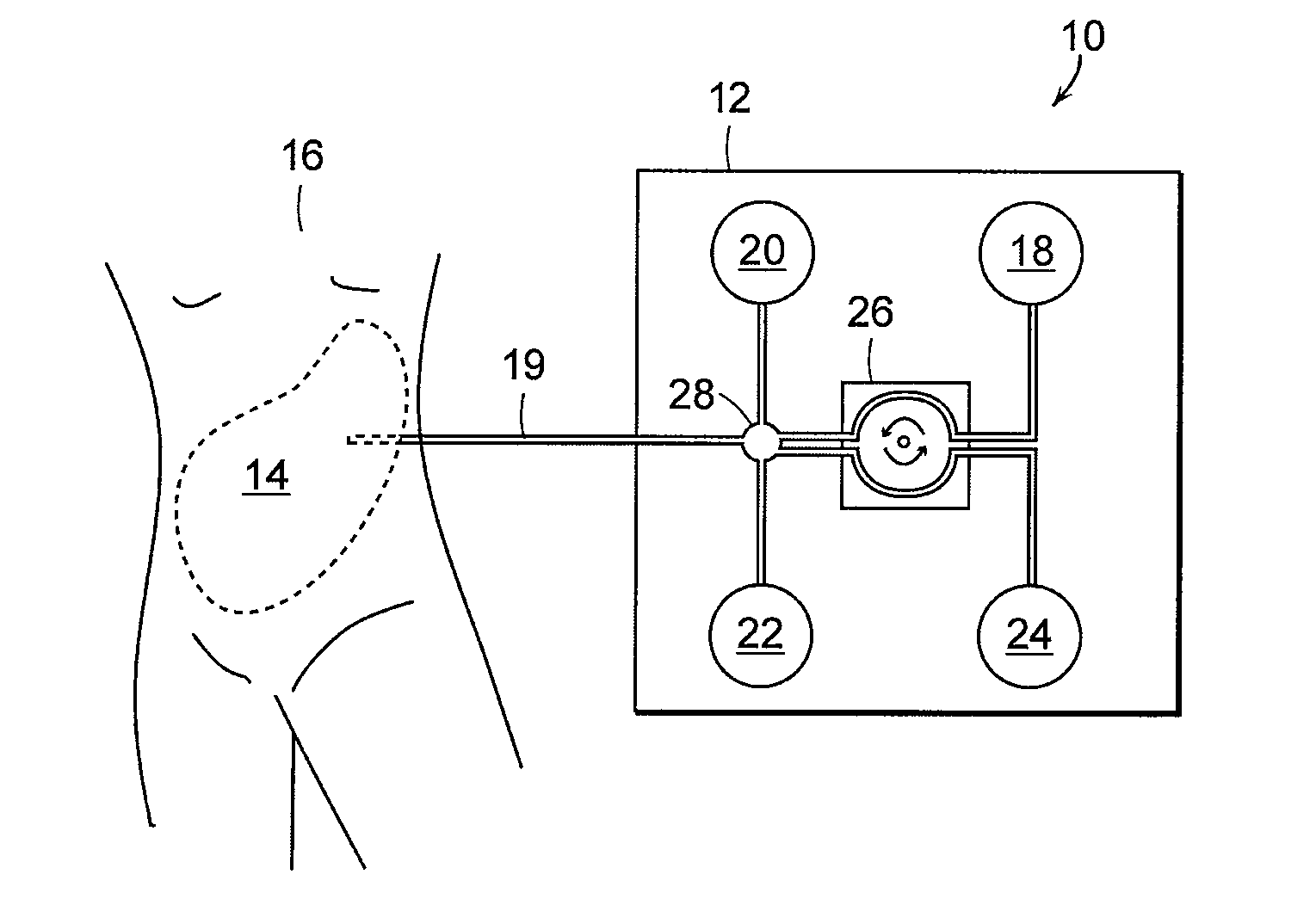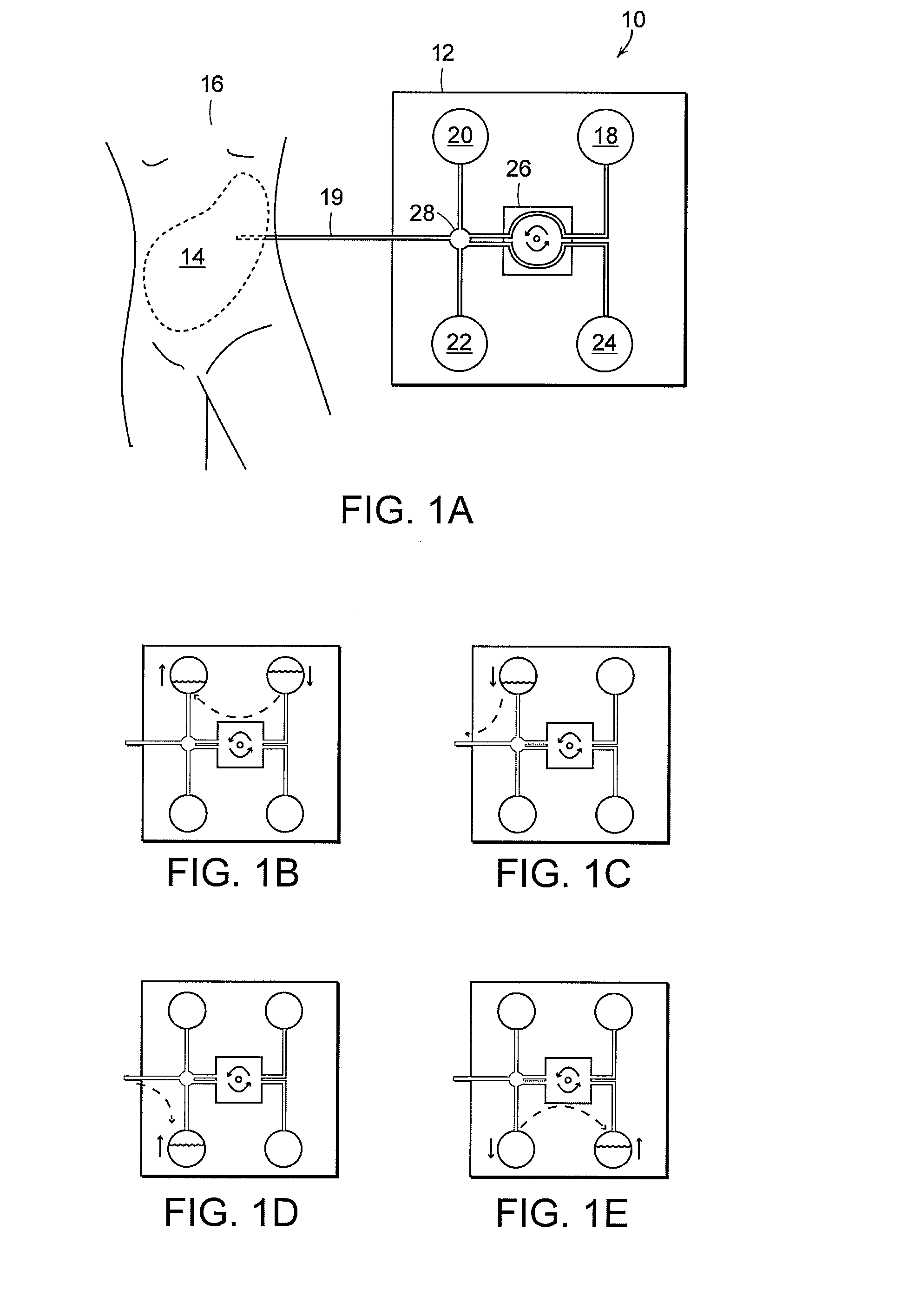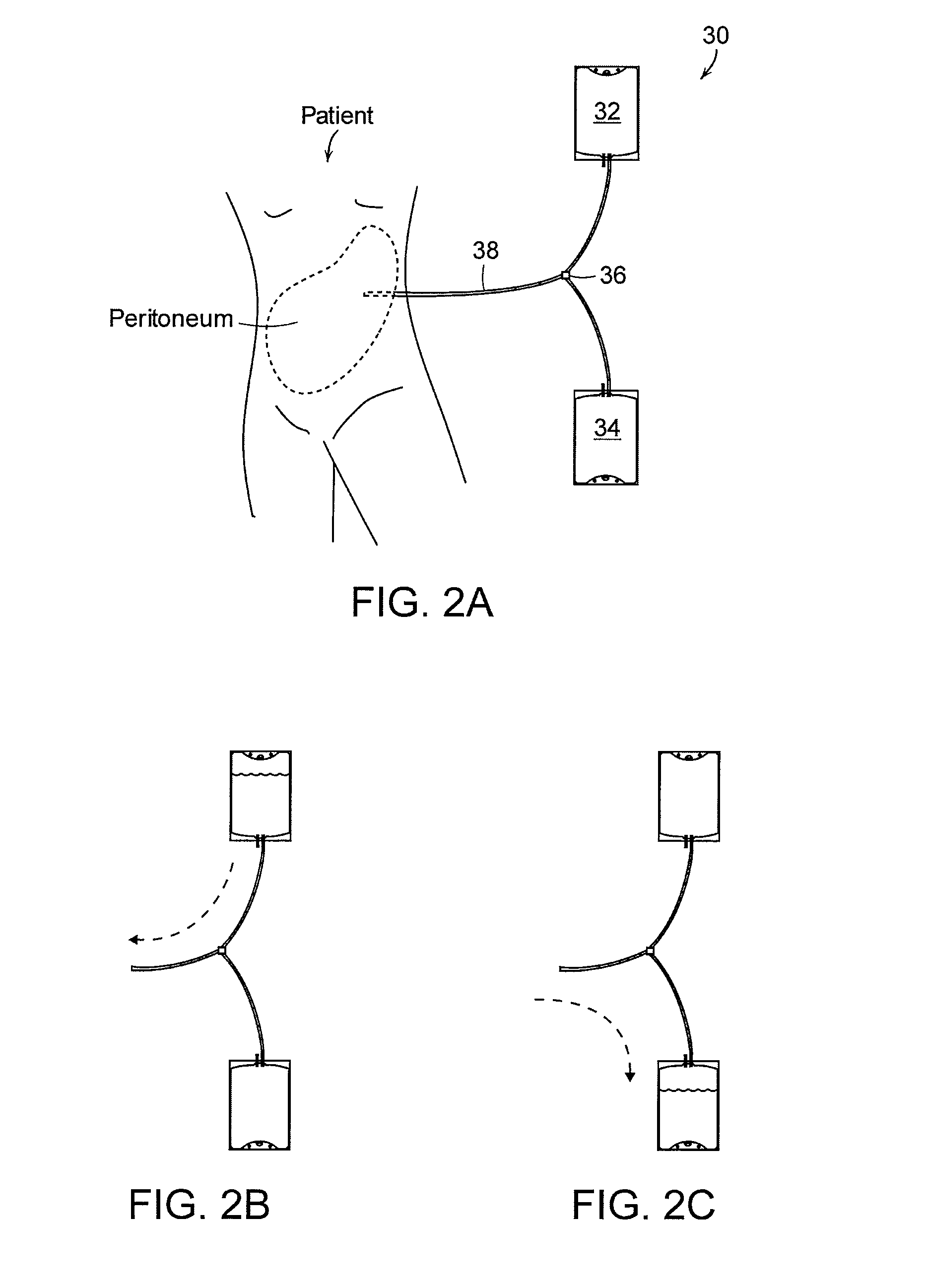Apparatus and methods for early stage peritonitis detection and for in vivo testing of bodily fluid
a peritonitis and in vivo testing technology, applied in the field of medical diagnostic testing, can solve the problems of only being able to do tests in the lab, end the patient's ability to stay on apd and capd therapy, and vomiting, so as to facilitate the cleaning of the inner wall of the effluent, the effect of increasing the turbulence of the effluent flow
- Summary
- Abstract
- Description
- Claims
- Application Information
AI Technical Summary
Benefits of technology
Problems solved by technology
Method used
Image
Examples
Embodiment Construction
[0053]FIG. 1A depicts an automated peritoneal dialysis (APD) treatment system 10 according to one practice of the invention and of the type with which the invention can be practiced. The system 10 includes a cycler 12 or other apparatus to facilitate introducing fresh peritoneal dialysis (PD) solution into, and removing spent PD solution from, the peritoneum 14 of a patient 16.
[0054]The system 10 includes a PD solution supply chamber 18, a heating chamber 20, a weigh chamber 22, and a disposal chamber 24, all constructed an operated in the conventional manner known in the art (albeit as adapted for inclusion of PD effluent test apparatus as discussed elsewhere herein). Thus, PD supply chamber 18 holds a supply of fresh PD solution for delivery to the patient 16; heating chamber 20 brings the fresh PD solution to an appropriate temperature for delivery to the peritoneum; weigh chamber 22 hold spent PD solution expelled from the peritoneum, e.g., for weighing; and, disposal chamber 24...
PUM
 Login to View More
Login to View More Abstract
Description
Claims
Application Information
 Login to View More
Login to View More - R&D
- Intellectual Property
- Life Sciences
- Materials
- Tech Scout
- Unparalleled Data Quality
- Higher Quality Content
- 60% Fewer Hallucinations
Browse by: Latest US Patents, China's latest patents, Technical Efficacy Thesaurus, Application Domain, Technology Topic, Popular Technical Reports.
© 2025 PatSnap. All rights reserved.Legal|Privacy policy|Modern Slavery Act Transparency Statement|Sitemap|About US| Contact US: help@patsnap.com



